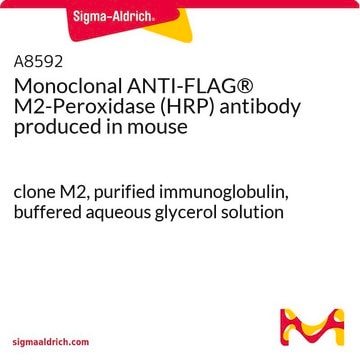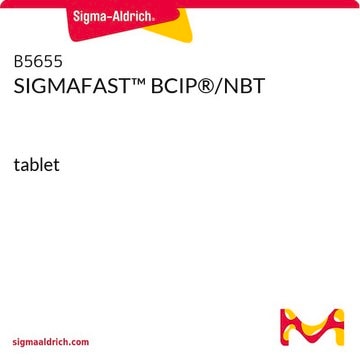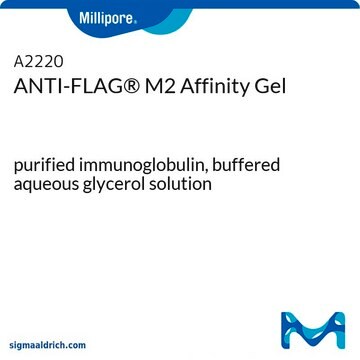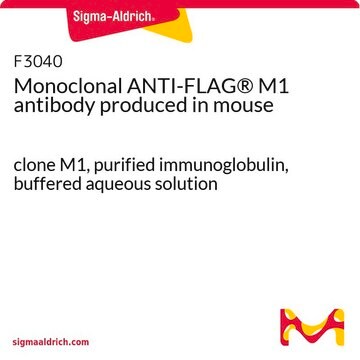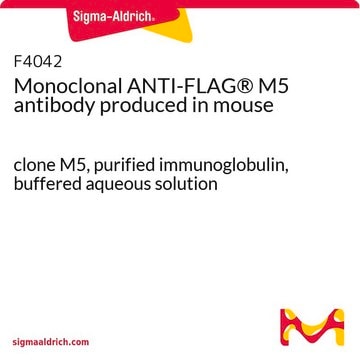A9469
ANTI-FLAG® M2 monoclonal
clone M2, purified immunoglobulin, buffered aqueous glycerol solution
Sinônimo(s):
Anti-ddddk, Anti-dykddddk
About This Item
Produtos recomendados
fonte biológica
mouse
conjugado
alkaline phosphatase conjugate
forma do anticorpo
purified immunoglobulin
tipo de produto de anticorpo
primary antibodies
clone
M2, monoclonal
Formulário
buffered aqueous glycerol solution
reatividade de espécies
all
concentração
~1 mg/mL
técnica(s)
indirect ELISA: 1:20,000
Isotipo
IgG1
sequência de imunogênio
DYKDDDDK
Condições de expedição
wet ice
temperatura de armazenamento
−20°C
Informações sobre genes
human ... ALPL(249)
Procurando produtos similares? Visita Guia de comparação de produtos
Categorias relacionadas
Descrição geral
Aplicação
Western Blotting (1 paper)
forma física
Informações legais
Não está encontrando o produto certo?
Experimente o nosso Ferramenta de seleção de produtos.
Código de classe de armazenamento
10 - Combustible liquids
Classe de risco de água (WGK)
WGK 3
Ponto de fulgor (°F)
Not applicable
Ponto de fulgor (°C)
Not applicable
Escolha uma das versões mais recentes:
Certificados de análise (COA)
Não está vendo a versão correta?
Se precisar de uma versão específica, você pode procurar um certificado específico pelo número do lote ou da remessa.
Já possui este produto?
Encontre a documentação dos produtos que você adquiriu recentemente na biblioteca de documentos.
Os clientes também visualizaram
Active Filters
Nossa equipe de cientistas tem experiência em todas as áreas de pesquisa, incluindo Life Sciences, ciência de materiais, síntese química, cromatografia, química analítica e muitas outras.
Entre em contato com a assistência técnica

